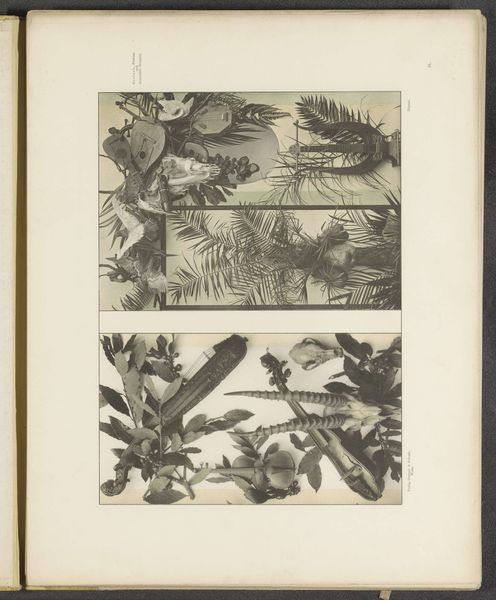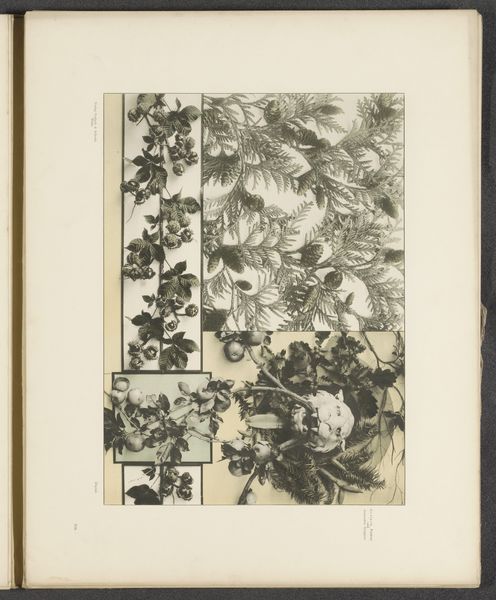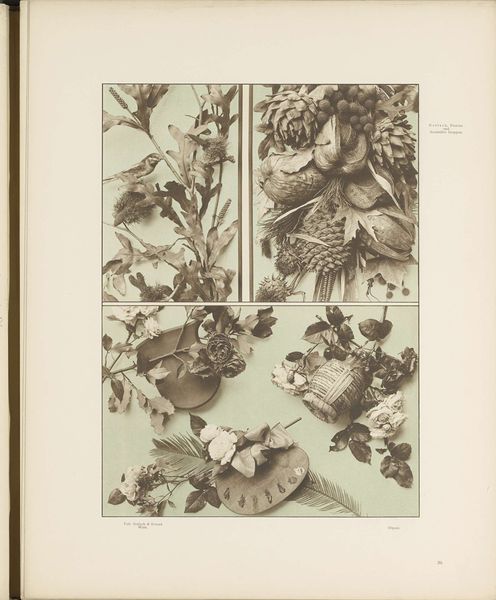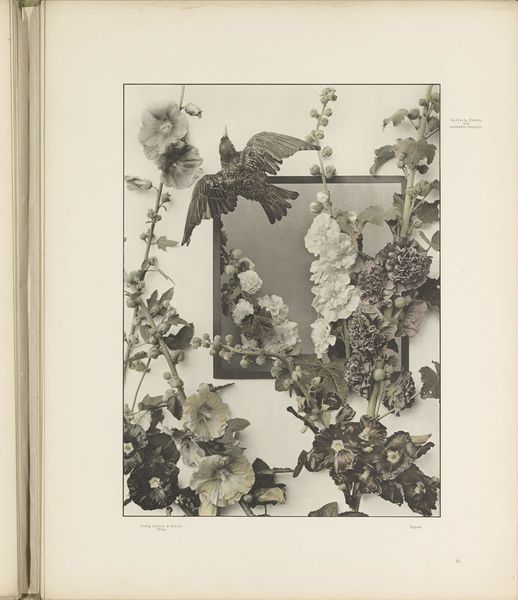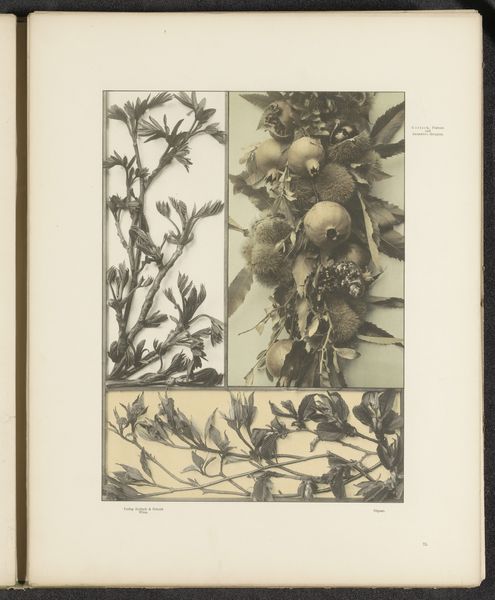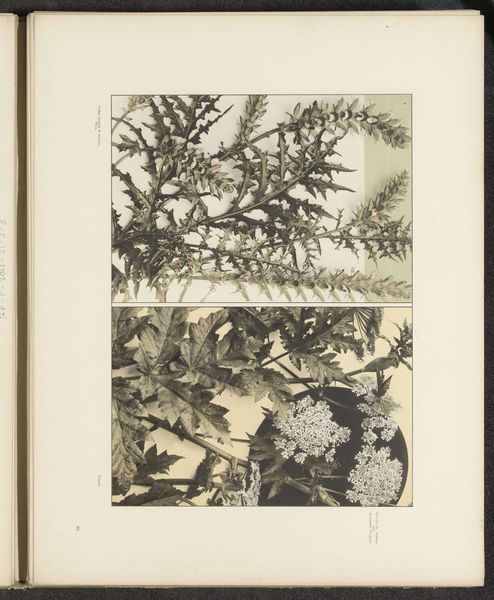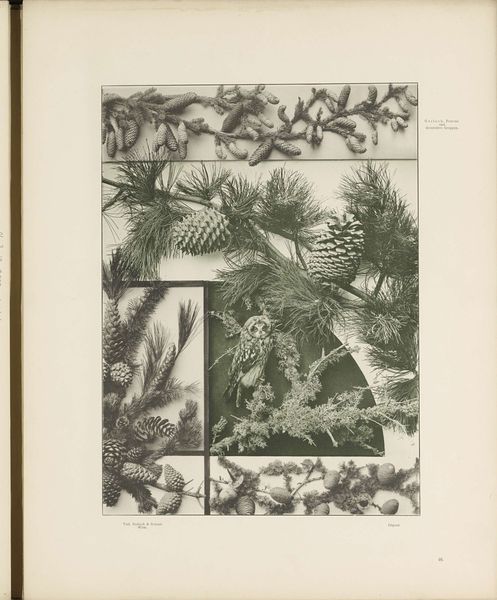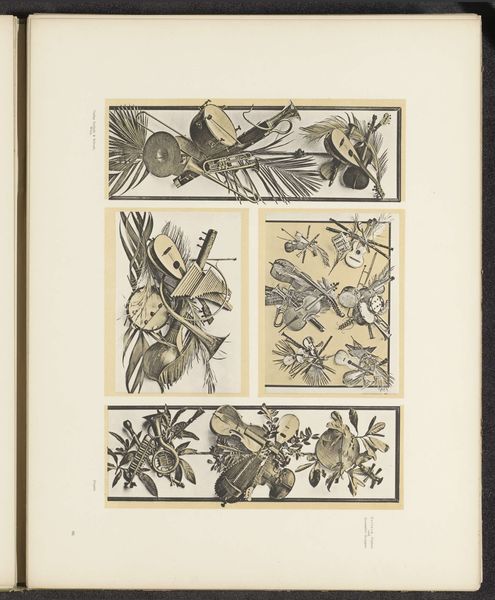
Drie vlakken met festoenen van dennentakken, pompoenen en kweepeer en een stilleven van artisjokken, klimop en een kan before 1897
0:00
0:00
# print
#
old engraving style
#
academic-art
#
decorative-art
#
realism
Dimensions: height 320 mm, width 405 mm
Copyright: Rijks Museum: Open Domain
Editor: This is "Drie vlakken met festoenen van dennentakken, pompoenen en kweepeer en een stilleven van artisjokken, klimop en een kan," a print made before 1897 by an anonymous artist. It feels very detailed, and almost… illustrative. What can you tell me about it? Curator: Well, focusing on the materiality, we can ask, what sort of press produced this print? The detail suggests an intaglio process, maybe etching or engraving. This tells us something about the skill and labor involved. These are clearly meant to be design templates, possibly for luxury goods or interior decoration. Consider the context. What does it mean to consume this type of imagery and what class consumes it? Editor: So you're thinking these weren't necessarily intended as fine art, but more as a commercial product? Curator: Precisely. Look at the combination of natural elements, things like fruits, vegetables, pine boughs, and what is represented by the act of carefully rendering them in such detail for mass reproduction? It suggests a very specific relationship to the natural world, one mediated by industrial processes. Notice the presence or absence of a human hand. What implications could these images carry about the value placed on the division of labour or skill? What were these skills used to produce? What were those items eventually used for, who manufactured these other items and who eventually benefited from them? Editor: I never thought about design templates having so much to say about labor. Curator: These weren't passively viewed. The image is functional: the artist made deliberate choices that speak volumes. It opens our understanding of design, consumption and art’s relationship with both the industrial world and the natural world. Editor: That gives me a lot to think about. Thanks for offering a new way of examining this image!
Comments
No comments
Be the first to comment and join the conversation on the ultimate creative platform.

